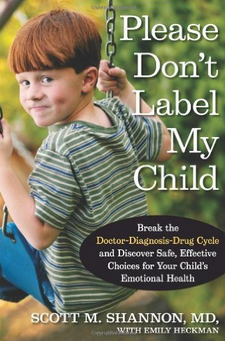
Last week I posted a review of Ilyana Romanovsky’s book Choosing Therapy. Today Ms. Romanovsky is here answering 5 questions. Welcome!
Dr. S: You obviously spent a lot of time researching this book as it provides the most thorough description of seeking and participating in therapy that I have ever read. Was there a certain instance or situation that led to you writing this book?
I.R.: The book actually began with patients scheduling appointments, coming in and telling their stories. Many had no idea about the process of therapy or what to expect from a therapist. Many also had negative experiences with therapy, having devoted a lot of time and money to no tangible results. Naturally, some stories were probably among the most emotionally grueling experiences I had heard, with people investing a fortune into psychotherapy and coming out of the experience having gained very little, feeling demoralized and believing that they were beyond help. It was humbling and horrifying to realize that the stories some patients recounted left them questioning the efficacy behind psychotherapy. Some even walked away sure of their own personal failures at being unable to achieve results they wanted.
So why did I set out to write Choosing Therapy? In part, because after one particular intake, my patient suggested that someone should write a book to educate the consumer about the process of psychotherapy, so that everyone is in a position to make an informed decision about therapy and the type of treatment that they are seeking. But the other reason I wanted to write the book is because I know what it is like, as a consumer, to want to dip my toe into something new without understanding the process, and feeling the need for a book, a class or advice that could guide me through the maze of a new venture.
Dr. S: What got you interested in the mental health profession in the first place?
I.R.: The road to a mental health career was a lengthy one for me. Originally, I had started out as a biologist at the University of Chicago, aspiring to become an M.D. As I spent months and years in hospitals and labs conducting clinical research and interacting with patients, I realized that what I wanted to do most was help people figure out how they could manage better the parts of their lives that were not working well, and move them towards a more satisfying place. On a more selfish note, I also enjoy working for myself, and knew early on that I wanted autonomy and ability to see clinical treatment through from beginning to end in an outpatient, private practice setting.
Dr. S: There is a lot of information in your book, if there is one thing – the most important tip – you would like your readers to take away from it, what would that be?
I.R.: One thing? No way. I would recommend the reader approach the process of psychotherapy the same way one would approach looking for a job. It is a personal journey that requires research, interviews and a well thought out treatment plan with your therapist as to how you will accomplish your objectives. Let me put it this way, plopping on the couch and hoping that the first therapist you meet will facilitate the process of treatment in such a manner that you can relate to, is almost unrealistic. Psychotherapy in my mind is the most inner-personal journey one can take with another, and requires a meticulous, well-informed approach.
Dr. S: I often write about stress and creative ways to manage it. We all know about yoga, taking walks, etc…but what are some of the more creative ways you manage your stress?
I.R.: Amazingly, through writing. There are only a few things that I enjoy more than writing. At times, I need it the same way I need food for energy. It can even be a preventative for managing my own sadness or stressors with life. Interestingly enough, I began writing Choosing Therapy after a difficult life transition, and can say without a doubt that writing helped me stay energized, be creative and play around with ideas in my head that I then got to share with others. Ideas are not always flowing and that can be frustrating, which is why I also enjoy hiking, mountain biking and running. Some form of physical exercise is important to me as a tension release when by world of ideas is on pause.
Dr. S: What are you working on now? Any new books in the works?
I.R.: I am tossing a few things over in my head and will probably write again fairly soon.  When I juggle the next project in my mind, I have to push forward and rewind a number of times before I have a good story or an idea. I figure out what I need to know research wise, and gear up for the next adventure. I will start writing when I have a great book cover design or a catchy first line. In the meantime, I am busy working through the licensure process and delineating my interests to obtain a research PhD in the field.
To learn more about Choosing Therapy, check it out here.
b723a79caec12dfc506e1495b5fc01b27309e218d6a6aabe35












